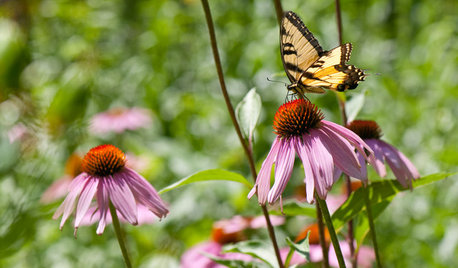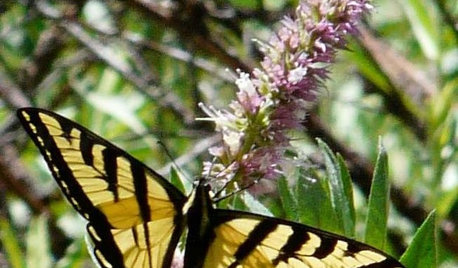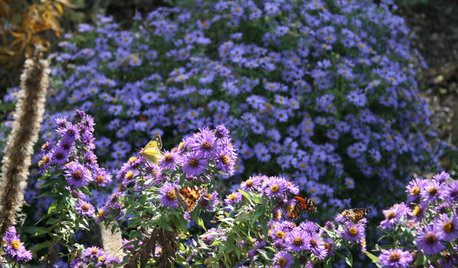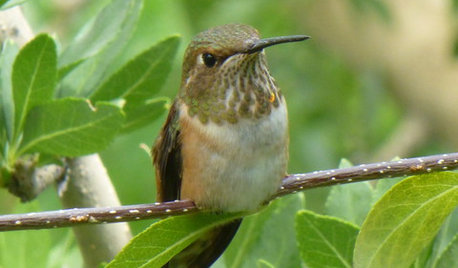Finally! A Swallowtail Visits The Flowers
Okiedawn OK Zone 7
11 years ago
Related Stories

GARDENING GUIDESEntice Eastern Tiger Swallowtails With Summer Flowers
Grow nectar-rich native bloomers and larval host plants for these endearing butterflies
Full Story
LIFEModern Manners for Conflict-Free Family Visits
Avoid thermostat wars, pet peeves and the great shower squeeze with these tips for having family as houseguests
Full Story
HOLIDAYSSet the Scene for a Stress-Free Holiday Visit
Put your guests at ease and take the pressure off hosting by prepping your space with psychology in mind
Full Story
GARDENING GUIDESAttract Hummingbirds and Bees With These Beautiful Summer Flowers
Roll out a welcome mat for pollinators to keep your landscape in balance and thriving
Full Story
GARDENING AND LANDSCAPING9 Flowers That Draw Butterflies
Charm winged beauties and human visitors alike with these enticing, fragrant and colorful blooms for the garden
Full Story
PLANTING IDEAS5 Reasons to Bring Shrubs Into the Flower Garden
Mix up the garden experience and let the flowers and shrubs play together
Full Story
FLOWERS15 Native Flowers That Attract Butterflies
By picking plants from this list that are right for your location, you’ll get colorful blooms and support pretty pollinators
Full Story
GARDENING GUIDES8 Flowers That Hummingbirds Adore
To draw those mesmerizing little birds to your garden or doorstep, plant these flowers that are attractive in more ways than one
Full Story
GARDENING GUIDESLet Lilac Love Flower This Spring
Whatever you bestow or receive for Mother's Day, lilacs can be an unmatched gift in the garden in May
Full Story
GARDENING GUIDES20 Favorite Flowers for Butterflies and Bouquets
Discover perennials and annuals that do double duty as butterfly magnets and versatile cut flowers
Full StoryMore Discussions






cjlambert
Okiedawn OK Zone 7Original Author
Related Professionals
Clark Landscape Architects & Landscape Designers · Paradise Landscape Architects & Landscape Designers · Choctaw Landscape Contractors · Hoover Landscape Contractors · Kettering Landscape Contractors · Lake Saint Louis Landscape Contractors · Mastic Beach Landscape Contractors · North Plainfield Landscape Contractors · Pleasant Prairie Landscape Contractors · Rancho Santa Margarita Landscape Contractors · Waltham Landscape Contractors · Wareham Landscape Contractors · San Pablo Landscape Contractors · Marlboro Decks, Patios & Outdoor Enclosures · Parlier Decks, Patios & Outdoor Enclosuressusanlynne48
Okiedawn OK Zone 7Original Author
susanlynne48
Okiedawn OK Zone 7Original Author
susanlynne48
Okiedawn OK Zone 7Original Author
susanlynne48
Okiedawn OK Zone 7Original Author
susanlynne48
Okiedawn OK Zone 7Original Author